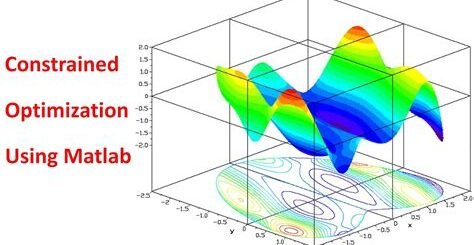Control Systems Design with Matlab
Are you interested in learning about control systems design and how to implement them using Matlab? Whether you’re a student, an engineer, or just someone curious about the topic, this blog post will provide you with a comprehensive introduction to control systems design with Matlab. We’ll start by giving you a basic understanding of what control systems are and their components. Then, we’ll delve into the process of developing mathematical models for control systems and discuss the importance of feedback in designing effective control systems. Finally, we’ll show you how to implement these control systems using Matlab, a powerful tool widely used in engineering and scientific applications. By the end of this post, you’ll have a solid understanding of control systems and the knowledge to start designing and implementing your own systems using Matlab. So, let’s dive in and explore the fascinating world of control systems design.
Introduction to Control Systems Design
Control systems design is a fundamental concept in engineering and technology that involves the creation and implementation of systems to manage and direct the behavior of other devices or systems. The design of control systems is crucial in ensuring that the desired output or response is achieved in various applications such as robotics, aircraft, automobiles, industrial processes, and more. It involves the use of mathematical models, feedback control systems, and various components to achieve the desired control objectives.
Understanding the basics of control systems design is essential for engineers and technologists who are involved in developing new technologies and improving existing systems. By having a strong foundation in control systems design, individuals can effectively manage and optimize the performance of different mechanical, electrical, and computer-based systems. This knowledge is vital for enhancing precision, stability, and reliability in a wide range of applications.
Developing proficiency in control systems design also opens up opportunities for professionals to work in diverse fields such as automation, robotics, aerospace, automotive, and manufacturing. The ability to design and implement control systems is highly sought after in industries that require efficient and accurate management of processes, ultimately leading to improved productivity and performance.
As technology continues to advance, the demand for individuals with expertise in control systems design is expected to grow. This is driven by the need to develop innovative solutions for complex systems, improve energy efficiency, enhance safety measures, and optimize overall system performance. Therefore, gaining an understanding of control systems design is not only valuable for personal and professional development, but also for contributing to the advancement of technology and its impact on society.
Understanding Control System Components
Control system components are the building blocks of any control system, and understanding how they interact is crucial for designing an effective and efficient system. The main components of a control system include sensors, actuators, controllers, and communication devices.
Sensors are responsible for detecting changes in the environment and converting them into electrical signals that can be used by the control system. Actuators, on the other hand, are the devices that receive signals from the controller and produce the necessary output to control the system. Controllers are the brains of the control system, processing the input from sensors and producing the necessary output for the actuators. Finally, communication devices are used to transmit data between the different components of the control system, ensuring that they work together seamlessly.
Each of these components plays a crucial role in the overall functionality of the control system, and understanding how they interact is essential for designing and implementing an effective control system. By understanding the function of each component, engineers can optimize the performance of the system and ensure that it meets the requirements of the application.
In conclusion, understanding control system components is essential for designing and implementing effective control systems. Each component plays a crucial role in the overall functionality of the system, and by understanding how they interact, engineers can optimize the system’s performance and ensure that it meets the requirements of the application.
Developing Mathematical Models for Control Systems
Developing mathematical models for control systems is a crucial step in the process of designing and implementing effective control systems. These models allow engineers to understand and analyze the behavior of a system, as well as predict how it will respond to different inputs and disturbances.
One of the key components of developing a mathematical model for a control system is to identify the system’s dynamic behavior. This involves studying the relationships between the system’s inputs, outputs, and internal state variables, as well as any time delays or other non-linearities that may be present.
Once the dynamic behavior of the system has been characterized, engineers can use a variety of mathematical tools and techniques to develop a mathematical representation of the system. This may involve using differential equations, transfer functions, state-space models, or other mathematical formalisms, depending on the nature of the system and the specific control objectives.
After a mathematical model has been developed, it can be used to simulate the behavior of the system under different conditions, as well as to design and tune feedback control systems that will regulate the system’s behavior in real time. This allows engineers to ensure that the control system will perform as intended before it is actually implemented in a physical system.
Designing Feedback Control Systems
When designing feedback control systems, it is essential to have a thorough understanding of the system’s components and the interactions between them. The design process involves identifying the objectives of the control system, selecting appropriate sensors and actuators, and determining the control algorithm to achieve the desired performance.
Developing a mathematical model for the system is a crucial step in the design process. This model allows the engineer to analyze the system’s behavior and design a controller that can effectively regulate the system’s output. The stability, response time, and steady-state error of the system are factors that must be considered during the design phase.
Once the mathematical model has been established, the engineer can proceed with selecting a suitable feedback control algorithm. This algorithm is responsible for adjusting the system’s inputs based on the feedback received from the output. It is important to choose a control algorithm that can account for factors such as disturbance rejection, noise attenuation, and robustness.
Implementing the feedback control system using tools like Matlab allows for simulation and validation of the design before actual implementation. This step is crucial in ensuring that the control system operates effectively in real-world scenarios. The ability to fine-tune the controller and observe its performance in a simulated environment is invaluable in the designing process.
Implementing Control Systems using Matlab
When it comes to implementing control systems in real-world applications, it is essential to have the right tools and software at your disposal. One of the most widely used and powerful software for control system design and analysis is Matlab. With its robust toolboxes and capabilities, Matlab provides engineers and researchers with the means to develop, simulate, and implement various control systems.
Using Matlab, engineers can design and simulate a wide range of control systems, including but not limited to PID controllers, state-space controllers, and robust control systems. The software offers a user-friendly interface and a wide array of functions for analyzing the behavior and performance of control systems.
Matlab also provides the capability to integrate control systems with other systems, such as Simulink, to create complex and integrated control solutions. This allows engineers to test and validate their control systems in a simulated environment before implementing them in real-world applications.
Furthermore, Matlab offers powerful hardware-in-the-loop (HIL) simulation capabilities, allowing engineers to test their control systems with physical hardware in real time. This helps in ensuring that the control systems function as intended and meet the desired performance specifications.


